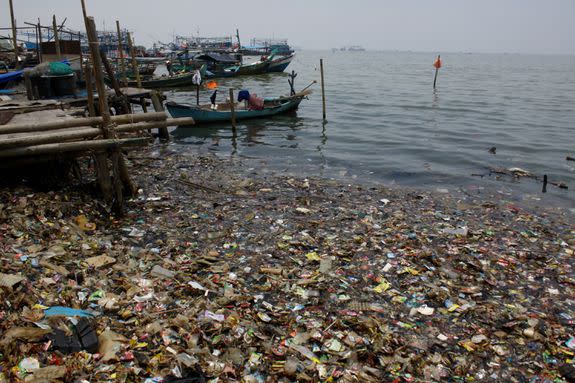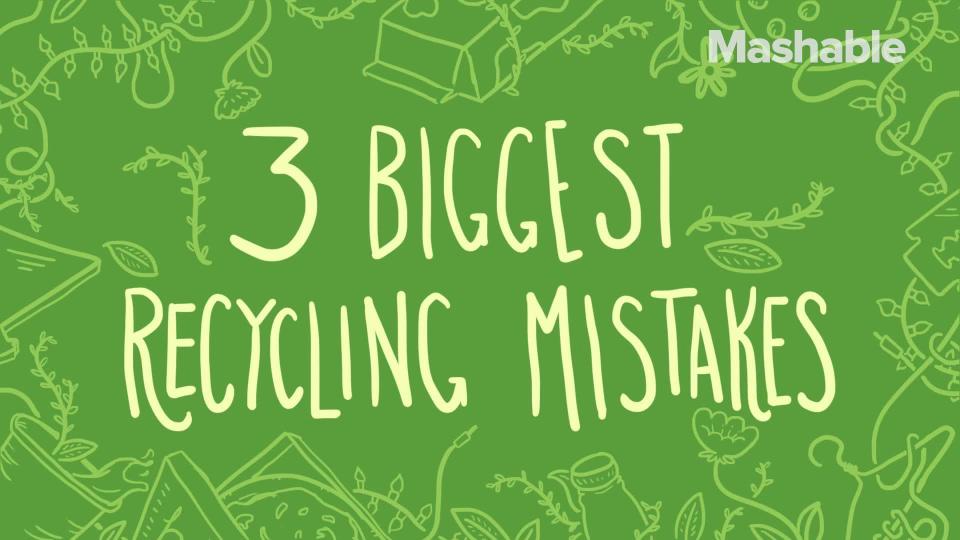Yes, there is a plastic bag at the bottom of the Mariana Trench

At some 35,700 feet beneath the ocean, there is a white plastic bag lying in the sand at the deepest ocean depths, in the Mariana Trench.
Scientists have known about the bag since May 1998, when a robotic deep-sea submersible spotted it while surveying the bottom of the trench. But a recent study on deep-sea plastic pollution gave this sad bag — representative of the planet's amplifying plastic pollution problem — new life.
It is still the deepest known piece of plastic debris on our planet, say the researchers. The trench's literal deepest depth isn't much further down, at approximately 36,200 feet.
SEE ALSO: Arctic sea ice is loaded with plastic litter from cigarettes and paint
In their endeavor to characterize today's deep sea pollution, the researchers relied on a Japanese library of deep-sea images called the Deep Sea Debris Database. As might be expected, this sort of pollution is no longer rare, as debris — including visible pieces of metal, rubber, and plastic — was found all over the Pacific Ocean and North Atlantic at depths greater than 13,000 feet.
And this, of course, is only documenting the plastic pollution that can be seen. Unsurprisingly, the Mariana Trench is also polluted in less visible ways, including chemicals used to make plastics found in tiny, shrimp-like creatures.
Plastics don't go away, they simply break down into smaller pieces, Jennifer Lavers, a research scientist at the University of Tasmania's Institute for Marine and Antarctic Studies, previously told Mashable. The minuscule plastics, many one-sixth the width of a human hair, have been found embedded in remote Arctic ice. It is believed that pollution from the Great Pacific Garbage Patch, in the Pacific Ocean, traveled into these remote polar regions.

Image: Aditya Irawan/NurPhoto via Getty Images
The patch, which is an area twice the size of Texas with high concentrations of floating plastic pollution, is growing. After 30 vessels spent three years dragging nets through the pollution gyre, researchers concluded it had at least four times more plastic than scientists previously thought.
Plastics aren't inherently bad, as they make technology cheaper and lighter. The problem is that plastic is typically only used once before being discarded — similar to the white bag that lies at the bottom of the world.
Local governments are no longer banking on the greater public to voluntarily abandon their plastic consuming habits. The entire state of Hawaii has banned plastic bags in its grocery stores, and large markets in Los Angeles have done the same.
But the problem goes beyond these individual locations. New York City, for example, has a heavy amount of plastic bag pollution, with litter often getting caught in trees, to the chagrin of many New Yorkers. (There's one dangling in a tree outside this writer's window.)
Andrew Cuomo, the governor of New York, recently announced a law banning single-use plastic bags, which would be an important step in the effort to limit plastic pollution in the oceans.
WATCH: 3 ways you can improve your recycling routine


